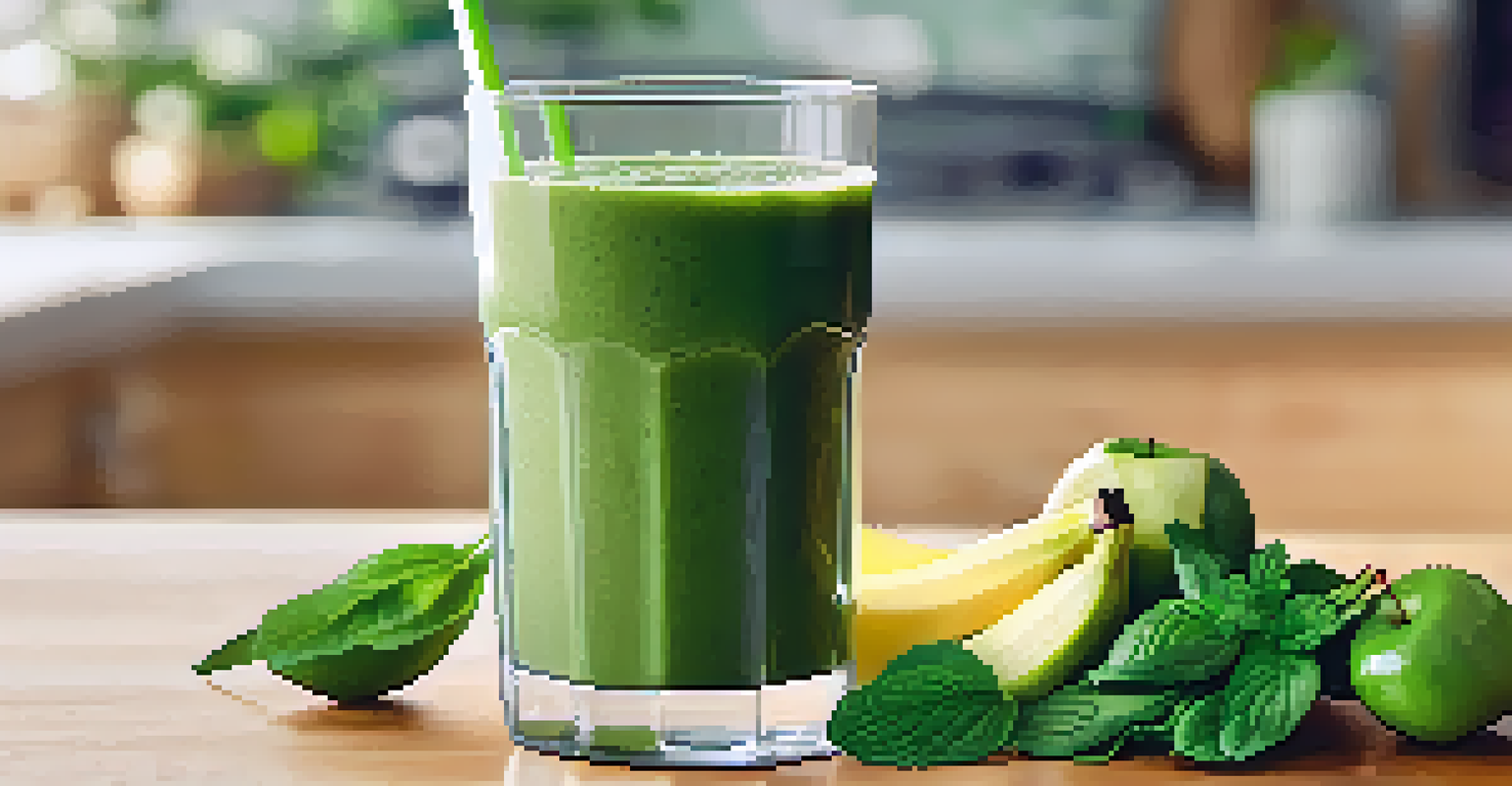Understanding Nutrient Preservation in Raw Food Diets

What is a Raw Food Diet and Its Core Principles?
A raw food diet primarily consists of unprocessed and uncooked foods. This means eating fruits, vegetables, nuts, seeds, and sprouted grains in their natural state. The philosophy behind this diet is rooted in the belief that cooking can destroy essential nutrients and enzymes that promote health.
Let food be thy medicine and medicine be thy food.
Many adherents of raw food diets argue that consuming food in its raw form maximizes nutrient preservation. For instance, heating food can break down vitamins and minerals, making them less available for absorption by the body. By avoiding cooking, raw food enthusiasts aim to ensure they get the full nutritional benefits of their meals.
However, it's important to note that not all foods are meant to be eaten raw. Some foods, like certain beans and grains, may contain toxins that are neutralized through cooking. Understanding which foods are best enjoyed raw is crucial for anyone considering this dietary approach.
The Science Behind Nutrient Preservation
Nutrient preservation in raw foods hinges on the concept that heat can destroy or reduce the availability of vitamins and minerals. For example, vitamin C is particularly sensitive to heat and can diminish significantly when exposed to high temperatures. This highlights why many raw food advocates stress the importance of eating certain fruits and vegetables uncooked.

Research suggests that cooking methods, such as boiling or frying, can lead to nutrient loss. Steaming is sometimes better, but it still may not retain all nutrients. By consuming raw foods, individuals might benefit from higher levels of antioxidants, vitamins, and minerals, contributing to overall health.
Raw Foods Maximize Nutrient Retention
A raw food diet emphasizes unprocessed and uncooked foods to preserve essential nutrients and enzymes.
However, while the raw food diet has its advantages, it is essential to balance it with foods that provide necessary nutrients that raw foods may lack. For instance, raw food diets can sometimes be low in protein and certain vitamins like B12, which are abundant in cooked foods and animal products.
Benefits of Nutrient Preservation in Raw Foods
One of the main benefits of preserving nutrients through a raw food diet is enhanced energy levels. Many individuals report feeling more vibrant and alert when consuming raw foods, likely due to the high intake of vitamins and minerals. This energy boost can be attributed to the unprocessed nature of the food, which retains its natural vitality.
You are what you eat, so don't be fast, cheap, easy, or fake.
Additionally, raw foods are often rich in enzymes that aid digestion. Enzymes are proteins that help break down food, making nutrients more accessible to your body. When you cook food, you may destroy these enzymes, which can lead to digestive issues for some people.
Lastly, a raw food diet can promote better hydration. Many raw fruits and vegetables have high water content, which can help keep you hydrated. Staying well-hydrated is essential for overall health and can enhance mental clarity and physical performance.
Challenges and Considerations of a Raw Food Diet
While a raw food diet has its perks, it also comes with challenges. One significant consideration is obtaining all essential nutrients. Certain nutrients, especially protein, iron, and vitamin B12, are less available in raw plant foods compared to cooked or animal-based options. This can lead to deficiencies if not carefully managed.
Another challenge is the time and effort involved in preparing raw meals. Raw food preparation can be labor-intensive, requiring soaking, sprouting, and chopping. For busy individuals, this might feel overwhelming and could lead to reliance on processed raw foods, which may not offer the same nutrient benefits.
Balance is Key for Nutritional Health
While raw foods offer benefits, it's important to balance them with cooked options to ensure adequate nutrient intake.
Lastly, some people may find it difficult to sustain a raw food diet long-term due to social situations or personal preferences. Eating out, attending gatherings, or simply craving cooked food can make adherence challenging. Understanding these challenges is vital for anyone considering this lifestyle.
Cooking Methods That Preserve Nutrients
For those who want to enjoy the benefits of both raw and cooked foods, understanding cooking methods that preserve nutrients is essential. Steaming, for instance, is a gentle method that can help retain more nutrients compared to boiling. This method uses minimal water and shorter cooking times, which can keep vitamins intact.
Another great method is blanching, where food is briefly boiled and then plunged into cold water. This technique can help preserve the color, texture, and nutrients of vegetables while making them easier to digest. It’s a fantastic way to enjoy the benefits of both raw and cooked foods.
Lastly, consider using low-temperature dehydrators. Dehydrating fruits and vegetables at low temperatures can help maintain their nutrient content while providing a different flavor and texture. This method allows you to enjoy raw foods in a new, exciting way without sacrificing nutritional value.
Incorporating Raw Foods into Your Diet
Incorporating raw foods into your diet doesn’t mean you have to give up cooked meals entirely. Start by adding more raw fruits and vegetables to your meals. For example, try having a fresh salad or smoothie made with leafy greens and fruits as a side dish or breakfast option.
You can also experiment with snacks. Instead of reaching for processed snacks, consider raw options like nuts, seeds, or raw energy bars made from dates and nuts. These alternatives can provide a satisfying and nutritious boost throughout the day.
Incorporate Raw Foods Easily
Adding raw fruits and vegetables to your meals can enhance health without completely abandoning cooked foods.
Lastly, consider meal prepping raw ingredients for the week. Chop vegetables and prepare dressings or dips in advance, making it easier to grab healthy, raw options on busy days. This approach allows you to enjoy the benefits of a raw food diet without feeling overwhelmed.
Conclusion: Balancing Raw and Cooked Foods
In conclusion, understanding nutrient preservation in raw food diets is essential for anyone looking to enhance their health. While raw foods offer numerous benefits, a balanced approach that includes both raw and cooked options is often the most practical and sustainable. This way, you can enjoy the advantages of nutrient preservation while also ensuring you meet your nutritional needs.
By thoughtfully incorporating raw foods into your meals, you can reap the rewards of higher energy levels, improved digestion, and better hydration. Remember to listen to your body and adjust your diet according to your individual needs and preferences.

Ultimately, the best diet is one that is enjoyable, satisfying, and nourishing. Embrace the variety that both raw and cooked foods can offer, and you'll likely find a path that supports your health and well-being.